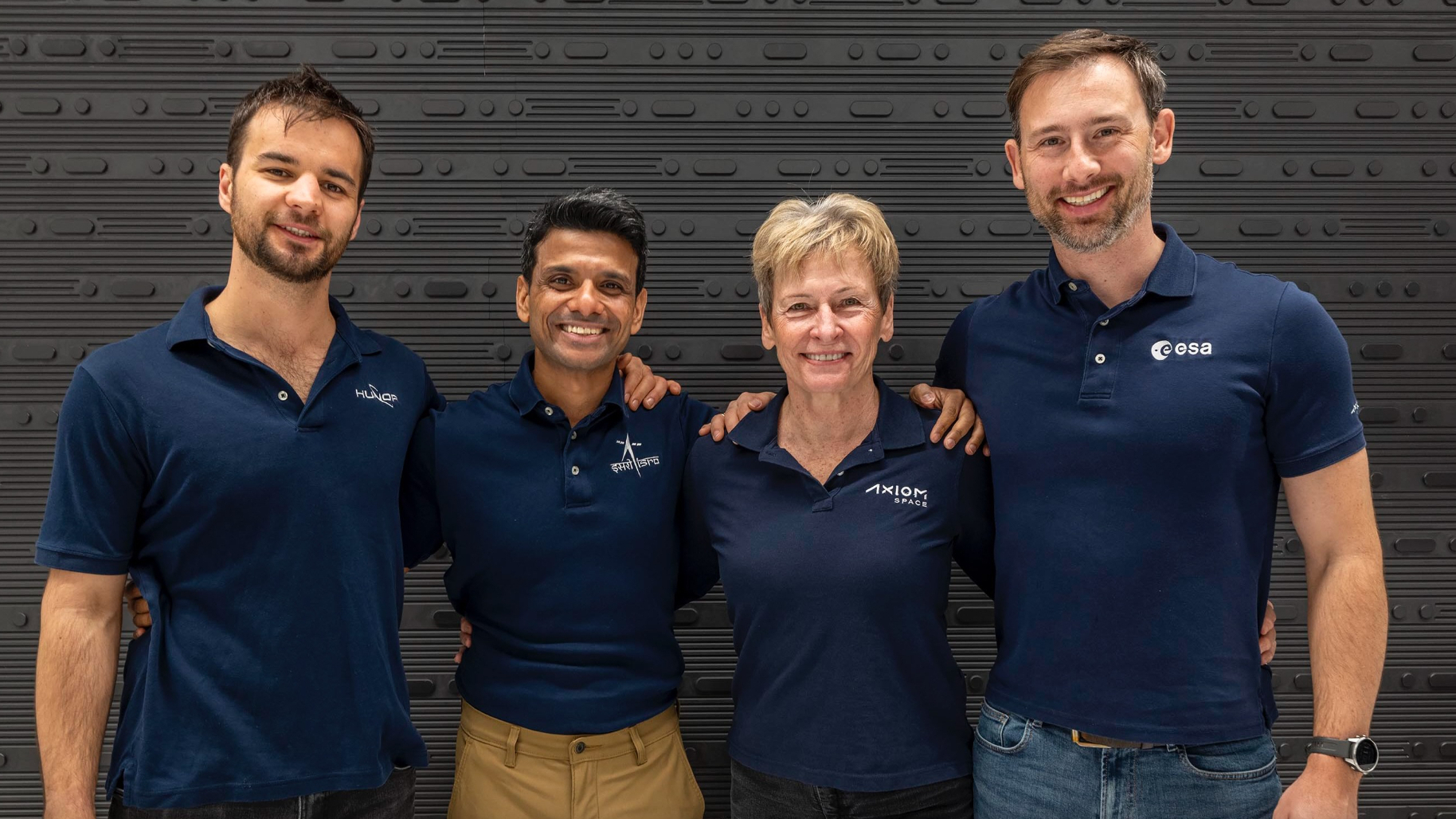Blue Origin's Amazing NS-11 New Shepard Spacecraft Test Flight in Photos
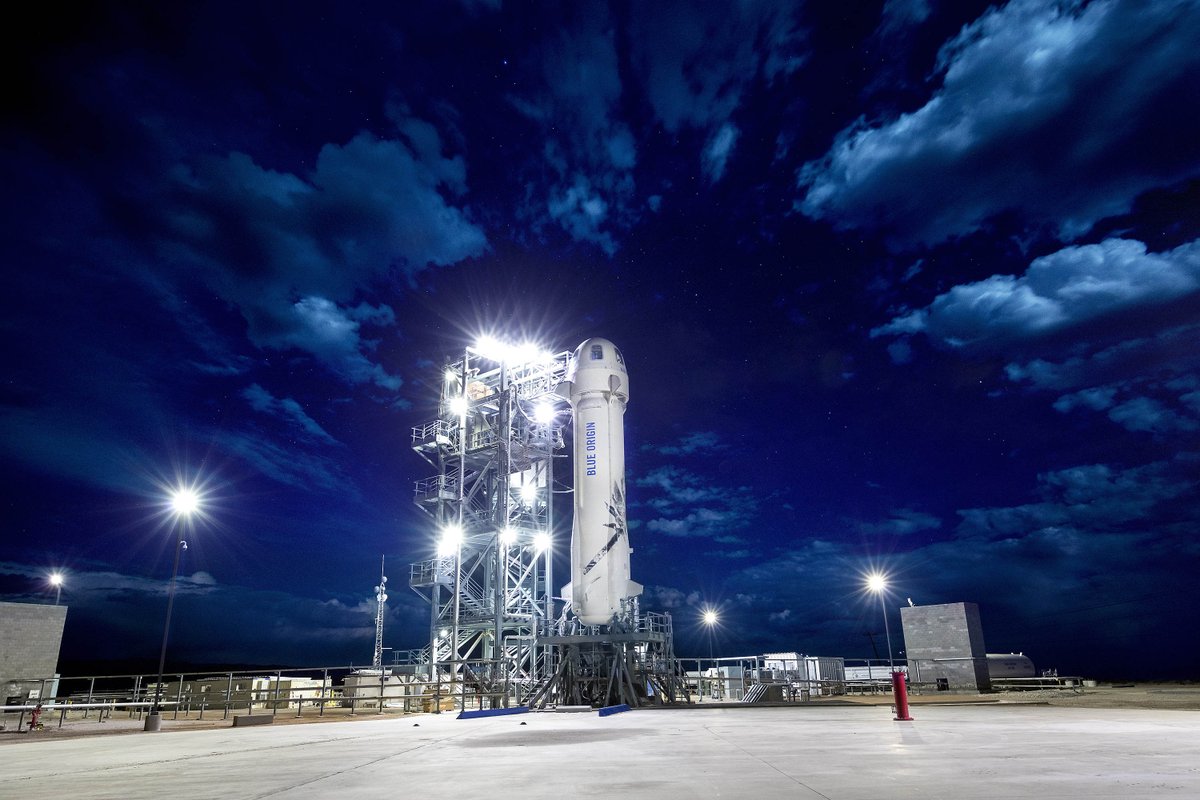
Blue Origin aced the 11th test flight of its New Shepard spacecraft, a reusable rocket-capsule combo, with a picture-perfect launch and double landing at the company's West Texas test site on May 2, 2019.
The New Shepard rocket lifted off on the "NS-11" mission at 9:35 a.m. EDT (1335 GMT; 8:35 a.m. local time) to send the uncrewed capsule to suborbital space. It returned to Earth after about 7.5 minutes of flight to stick an upright landing on the plains of Texas, and the capsule followed with a parachute landing about 3 minutes later. It carried 38 experiments on the flight, including nine experiments for NASA.
See photos from New Shepard's mission from the liftoff to the landings in this photo gallery!
Full Story: Blue Origin's New Shepard Spacecraft Launches Biggest Mission Yet, Sticks Landing
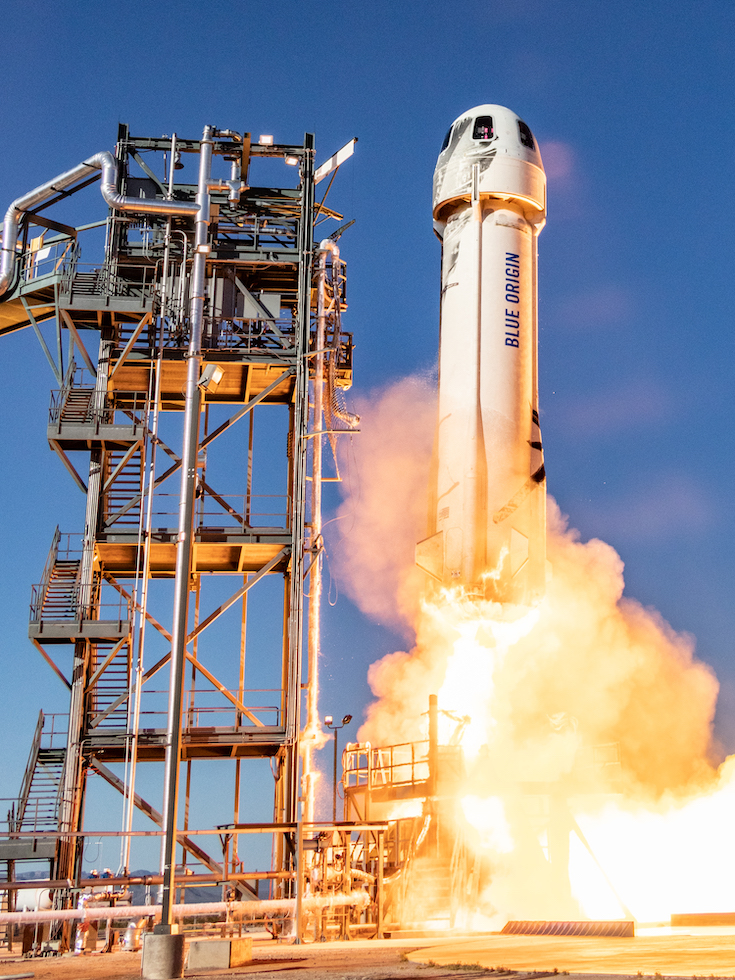
The moment of liftoff for Blue Origin's New Shepard rocket and spacecraft. The NS-11 mission may have been the eleventh flight for Blue Origin, but it was the fifth flight for this specific New Shepard booster/capsule combination.
The most recent flight for the spacecraft was in January, when the New Shepard launched a series of NASA experiments on a suborbital ride.
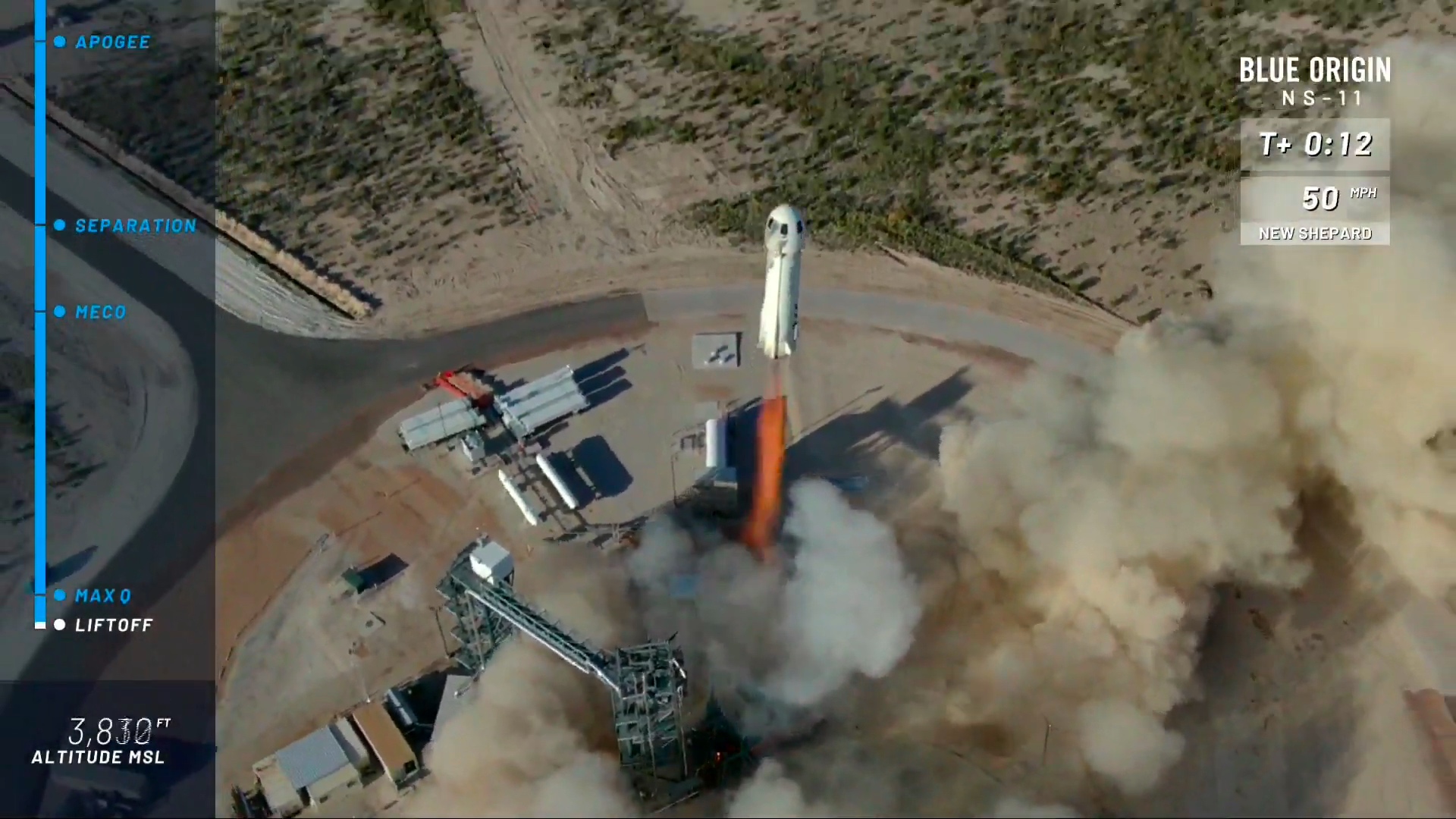
Blue Origin's New Shepard rises from its launch site in this aerial view captured 12 seconds after liftoff. At its max speed, New Shepard was traveling 2,217 mph )3,567 km/h) during this mission.
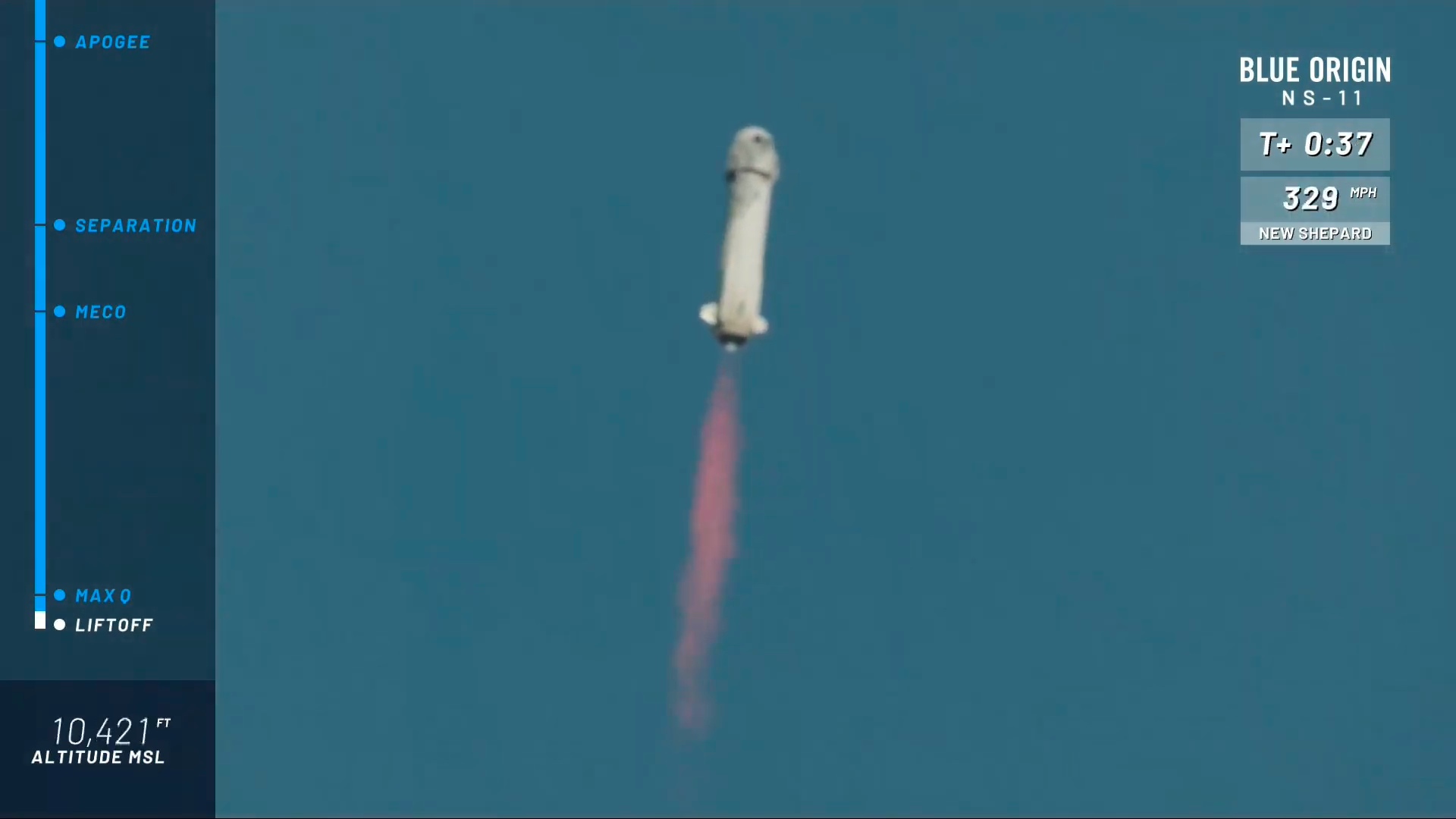
New Shepard ascents into the sky above West Texas. Blue Origin's New Shepard is designed for suborbital trips only, and cannot launch its crew capsule all the way into orbit.
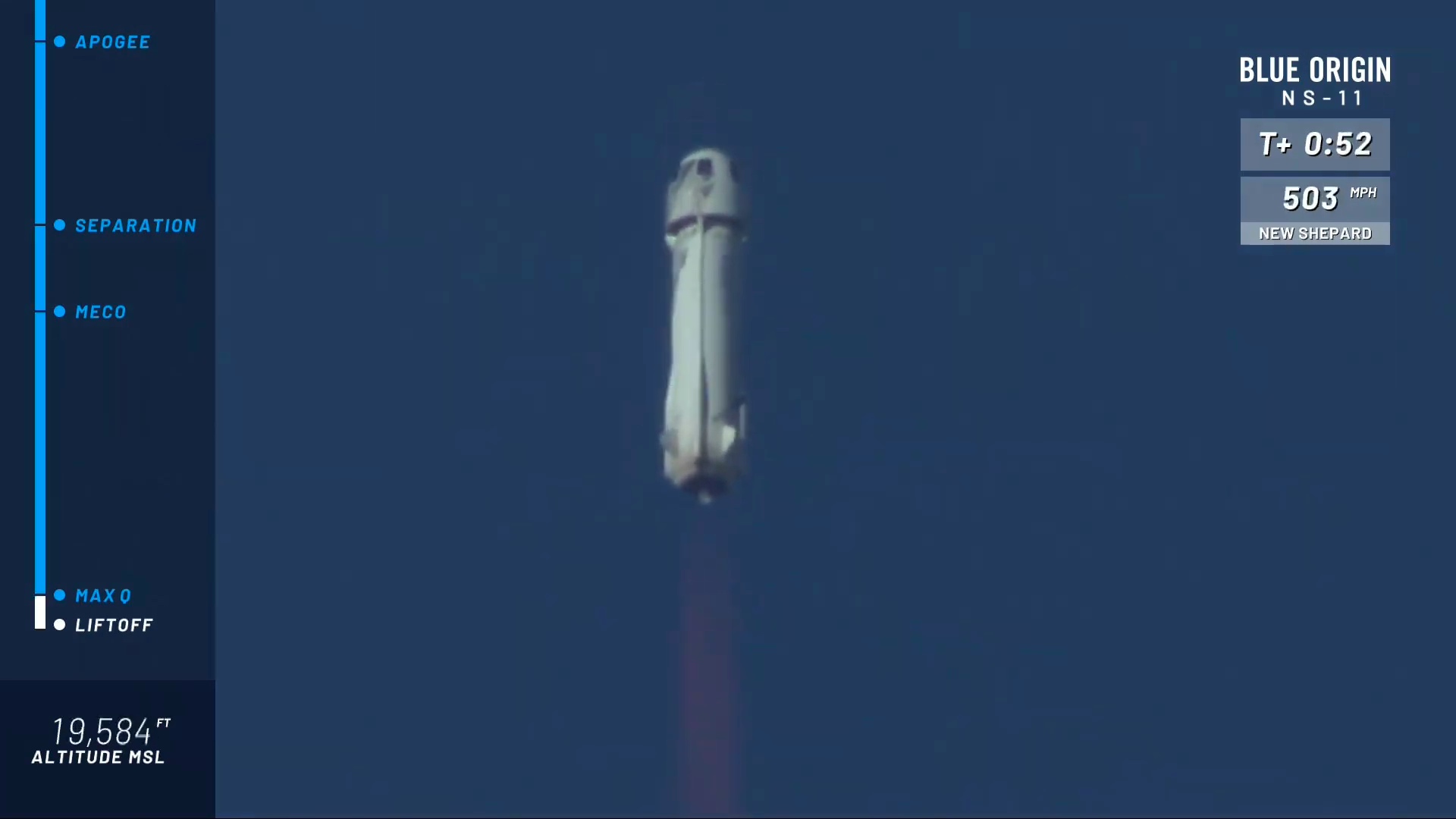
Just about a minute into New Shepard's flight. Blue Origin's New Shepard vehicles stand 60 feet tall (18 meters) and is powered by a BE-3 engine fueled by liquid hydrogen and liquid oxygen.
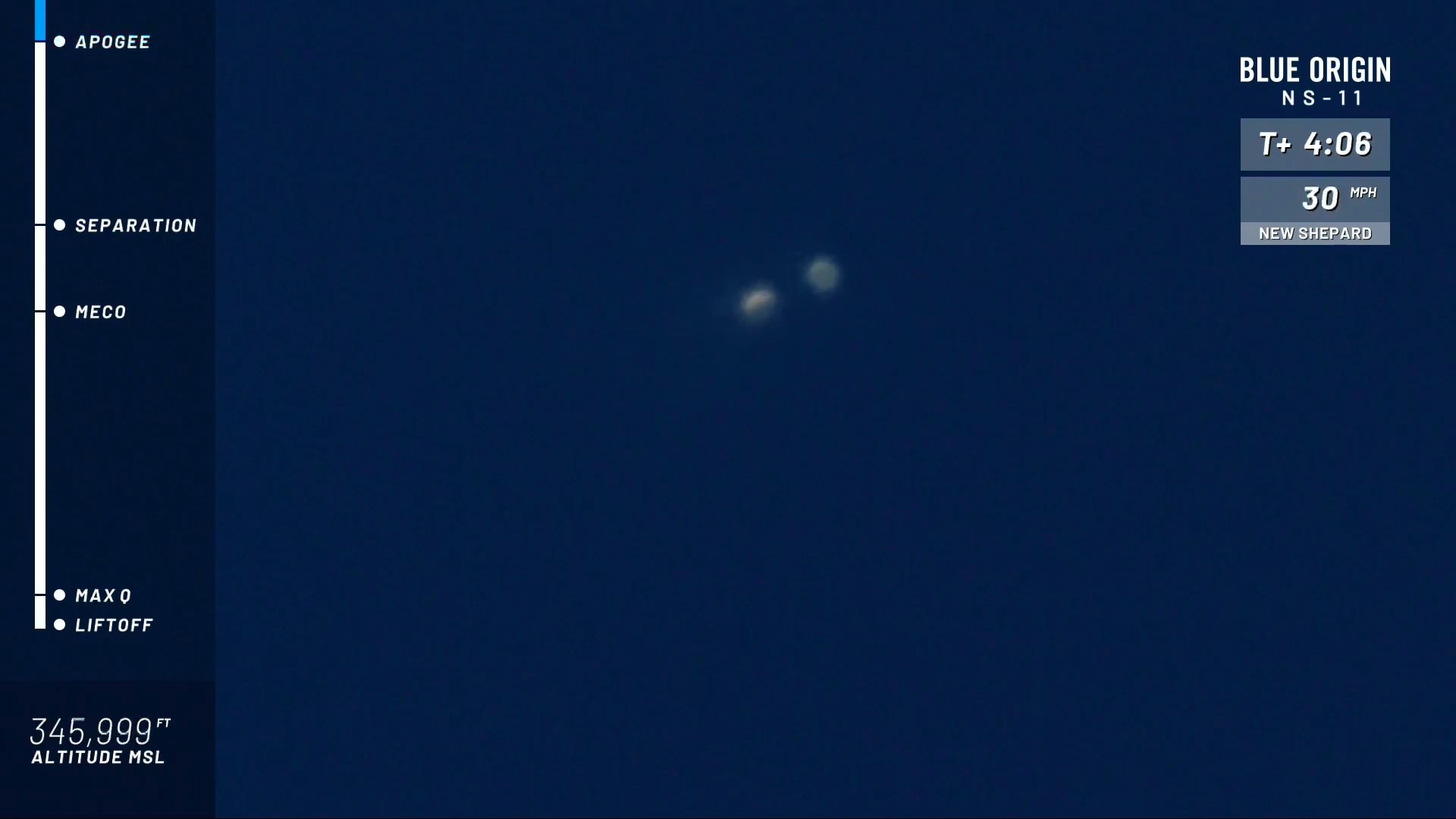
SEPARATION! Just past the 4-minute mark, New Shepard's crew capsule (top right) has separated from the booster. Both vehicles are reusable, with the booster flying back to the vertical landing.
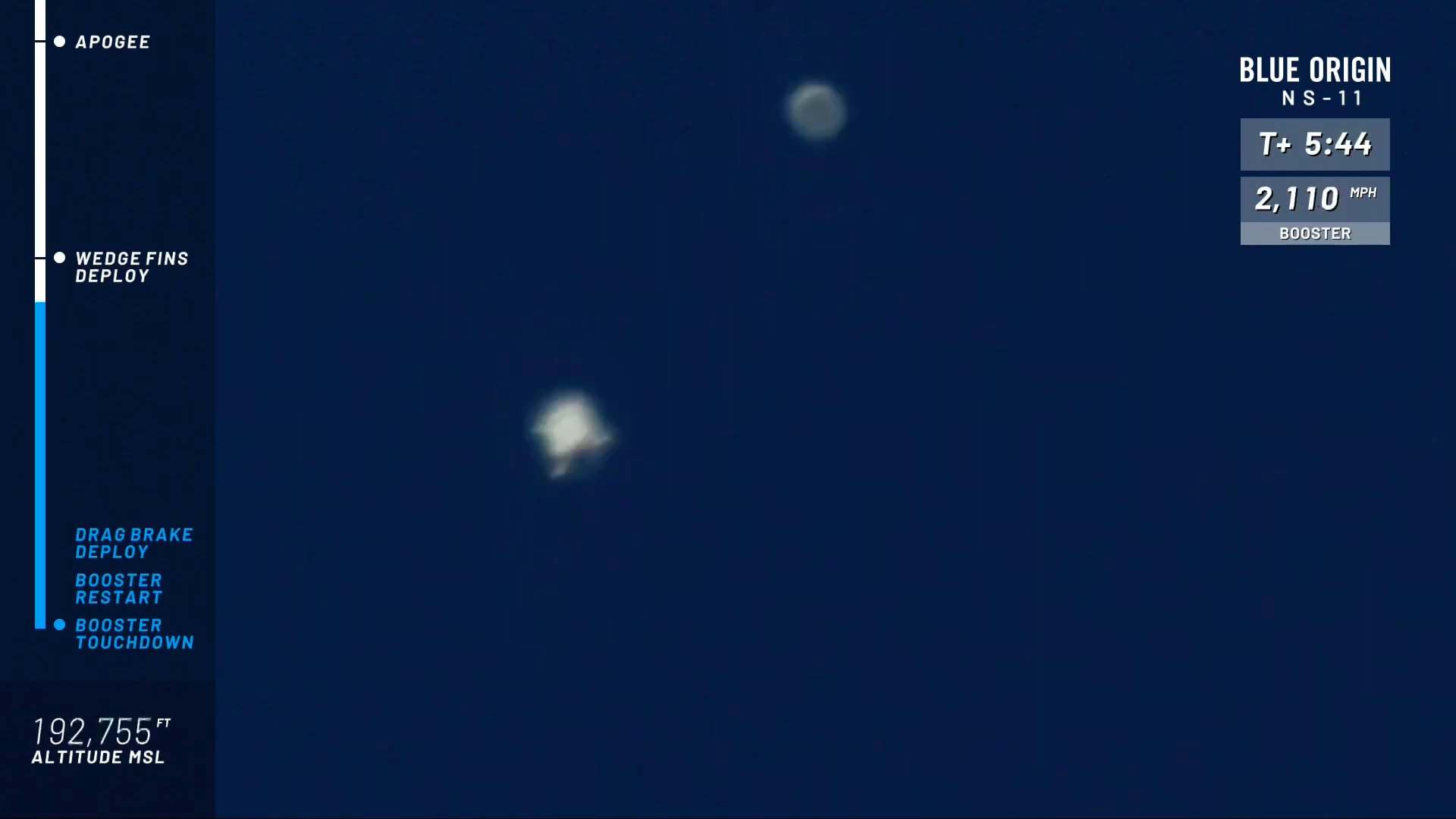
Nearly 2 minutes after separation. This close-up shows the New Shepard capsule as it continues on this suborbital flight while the booster (lower left) is falling back to Earth.
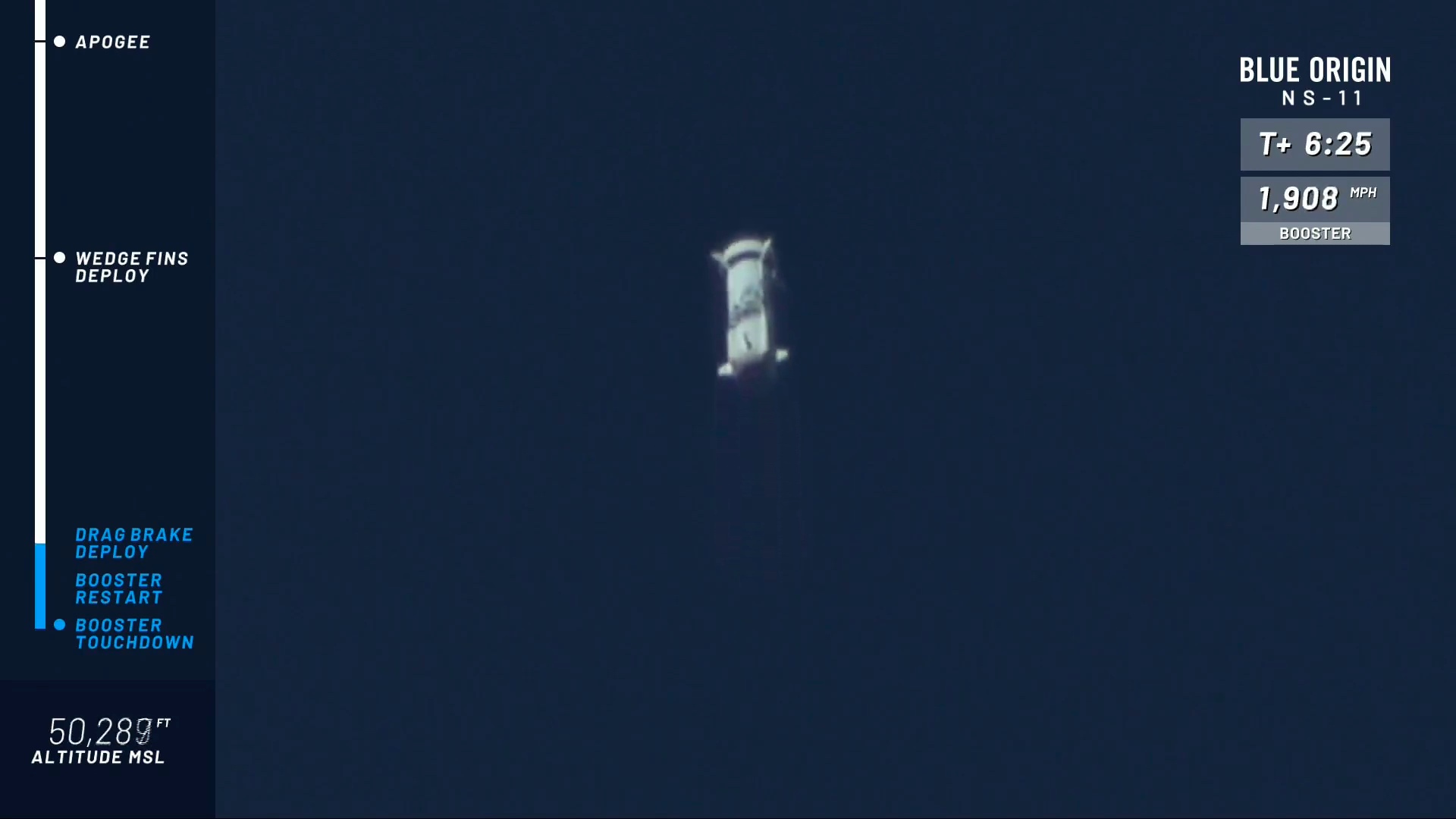
A close-up of the New Shepard booster as it falls back to Earth. The booster uses drag brakes along its top ring to stabilize itself during descent.
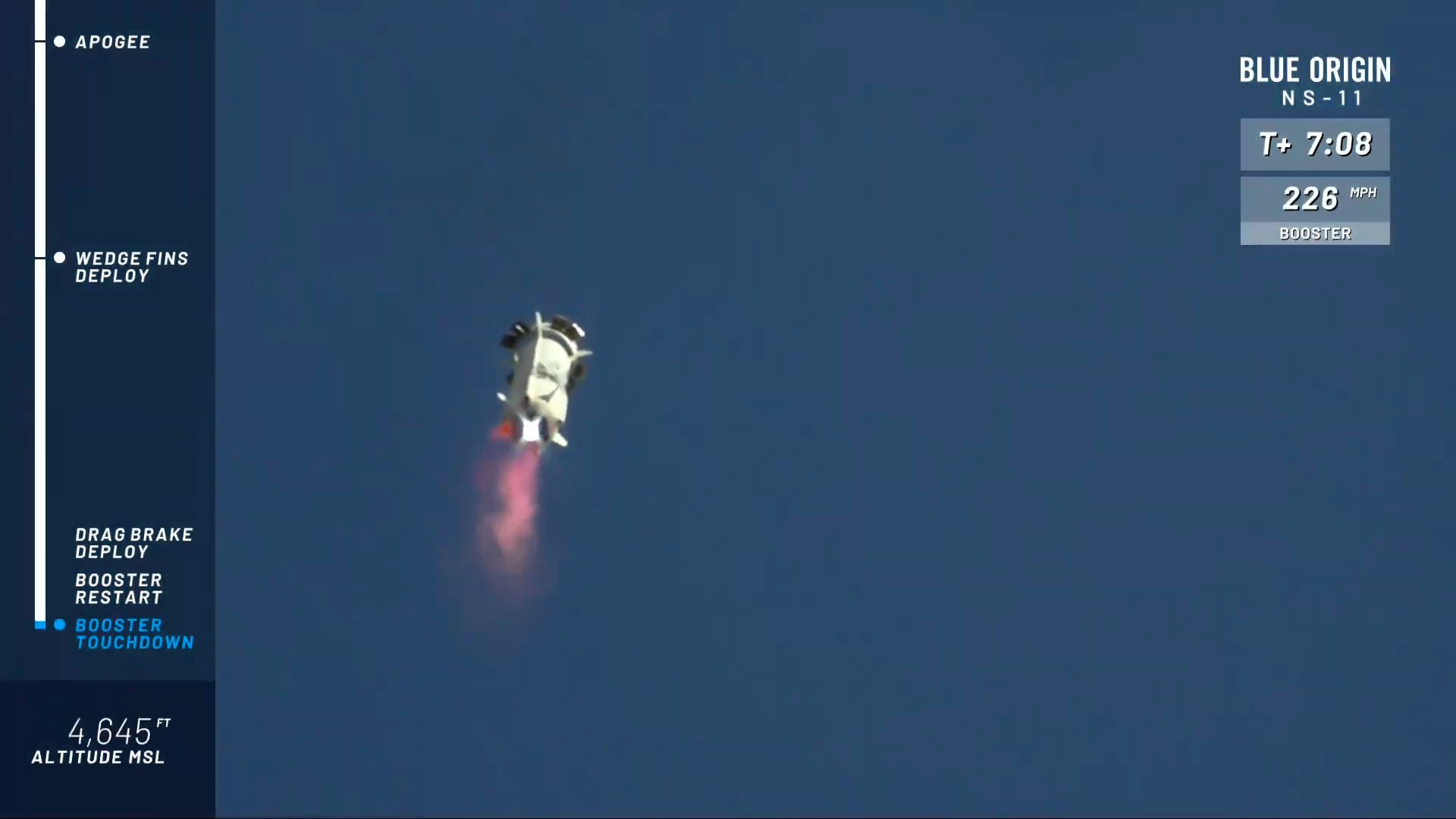
At the mission's 7-minute mark, New Shepard's BE-3 rocket engine relights for a landing burn to slow itself ahead of landing.
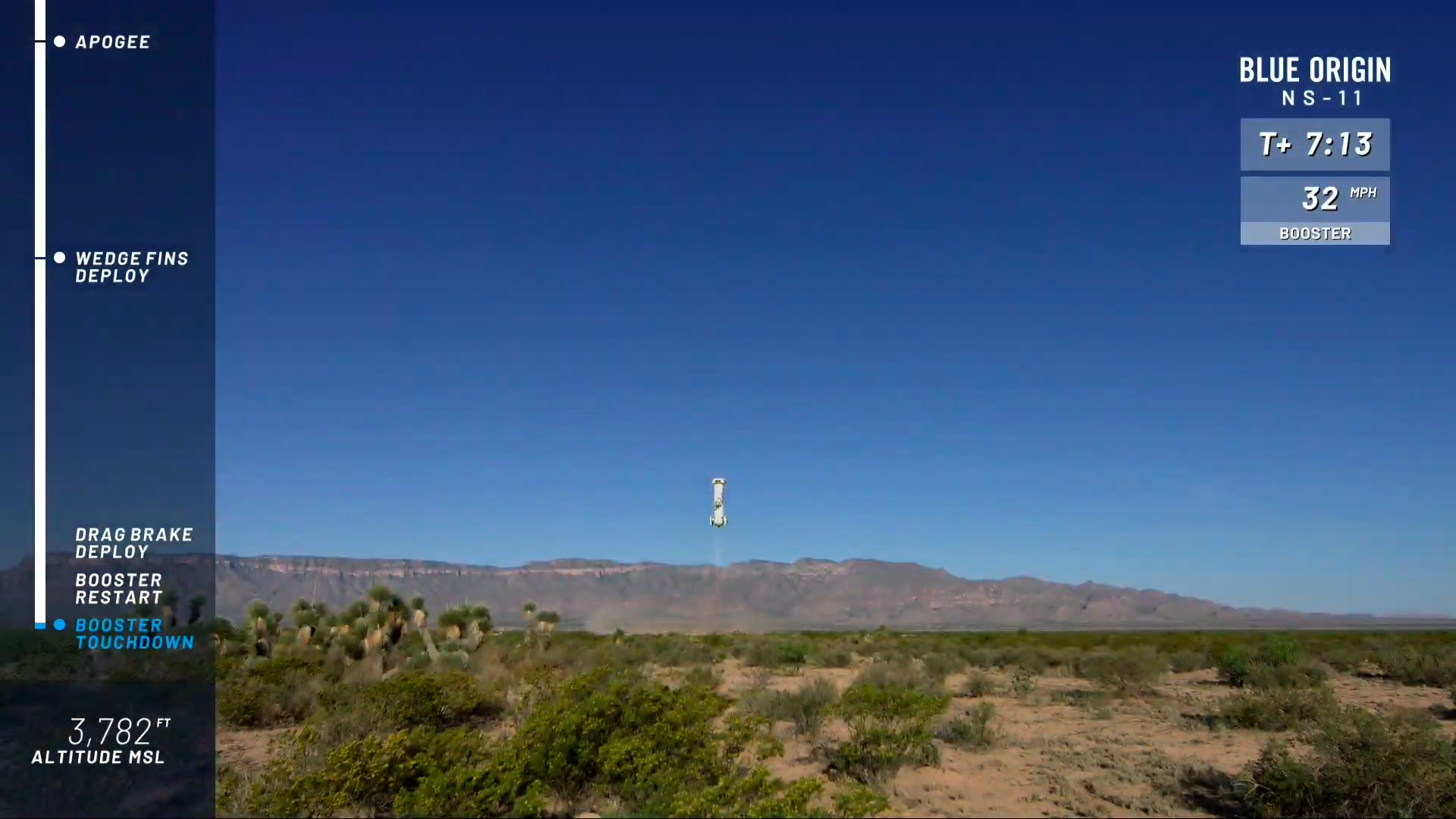
New Shepard nears its landing pad at Blue Origin's West Texas site.
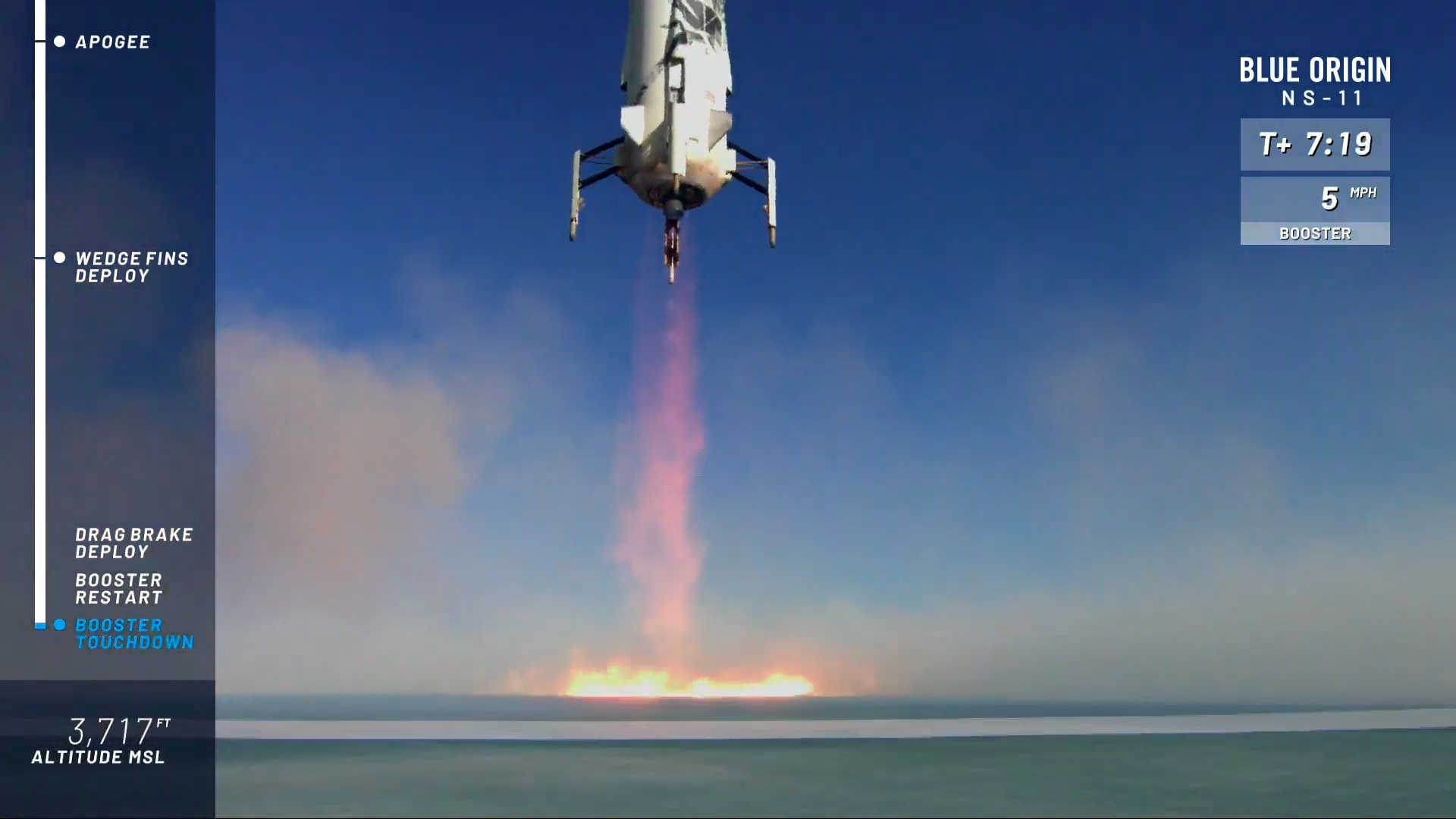
Almost there. New Shepard's landing legs have deployed for landing.
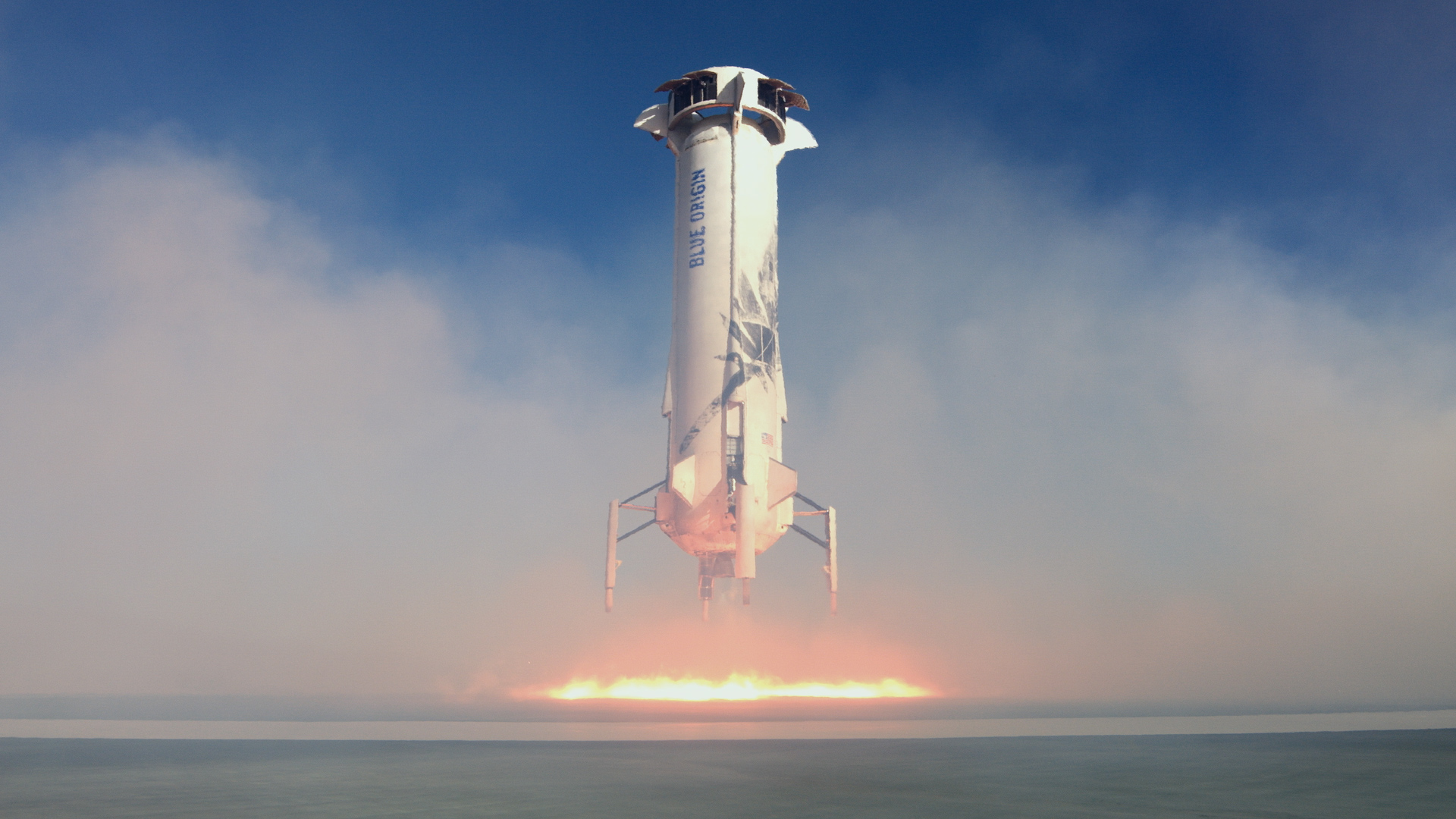
This view shows the moment just before booster touchdown for Blue Origin's NS-11 New Shepard mission. Meanwhile, the crew capsule filled with experiments continued on its suborbital journey.
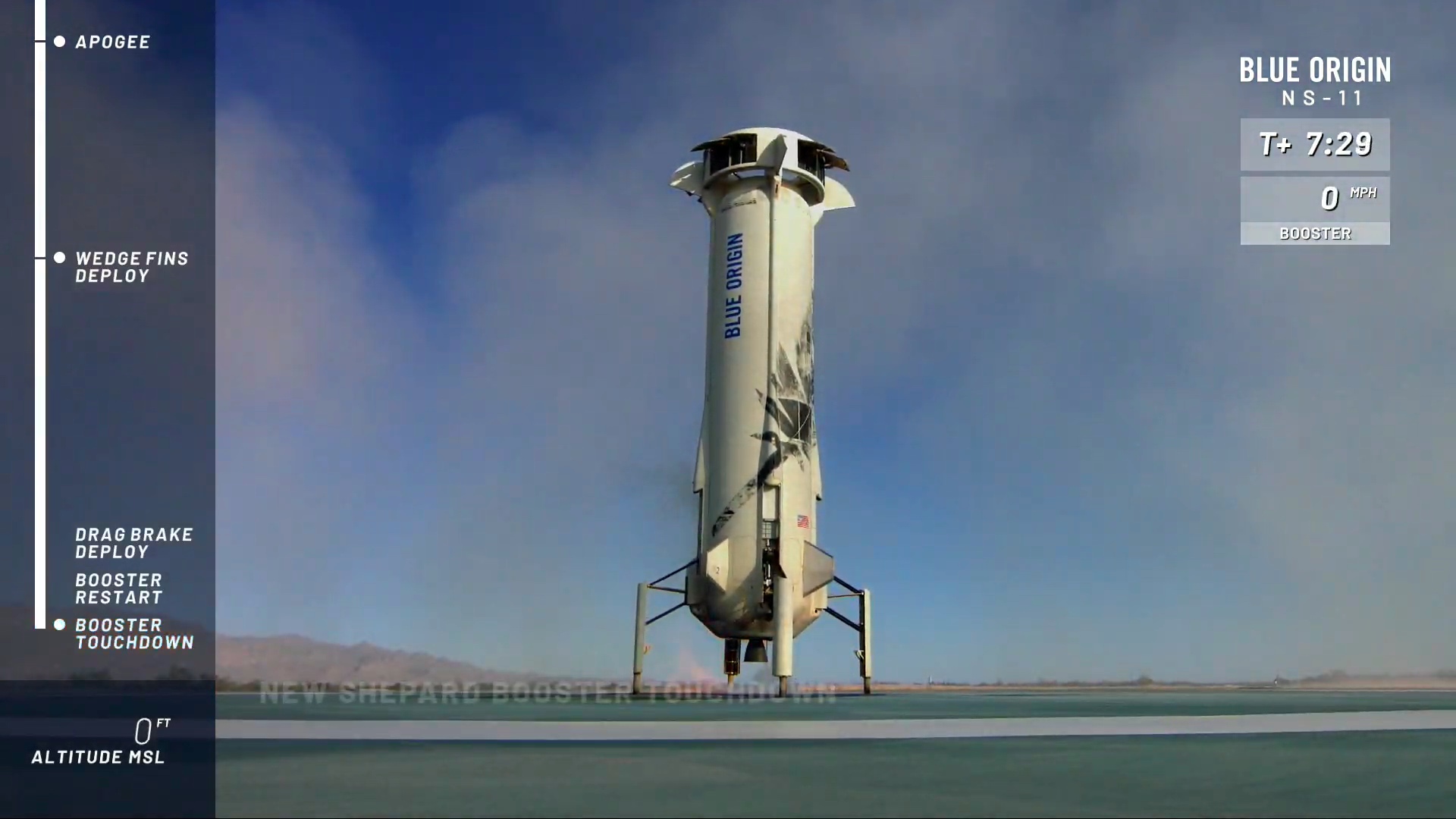
Back on Earth! New Shepard's booster is seen after its successful landing. This was the fifth booster landing of this specific New Shepard and the tenth overall for Blue Origin.
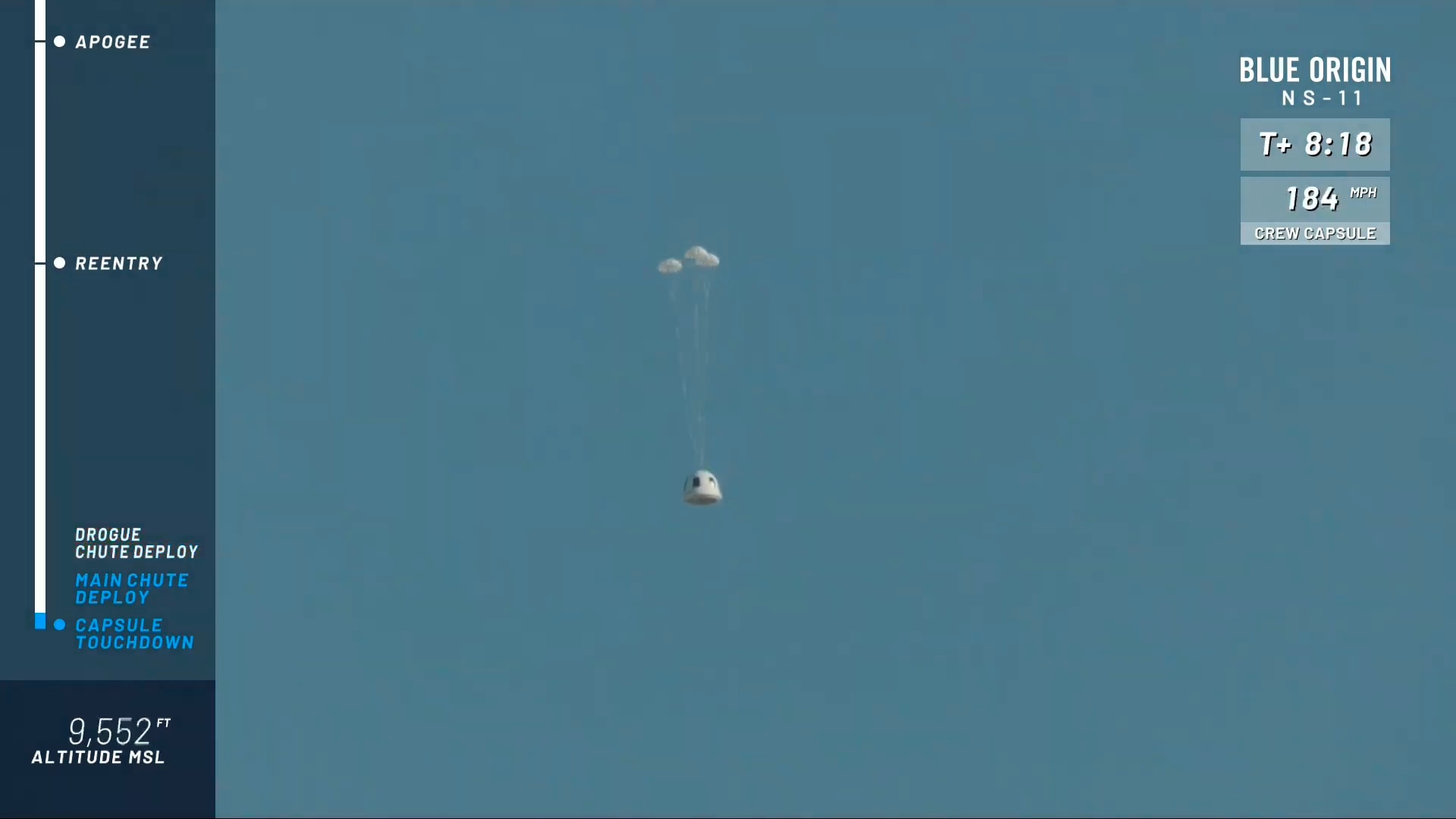
While New Shepard's booster was landing, the crew capsule continued its flight. Here, the capsule is on the way back to Earth and has deployed drogue chutes to slow its descent.
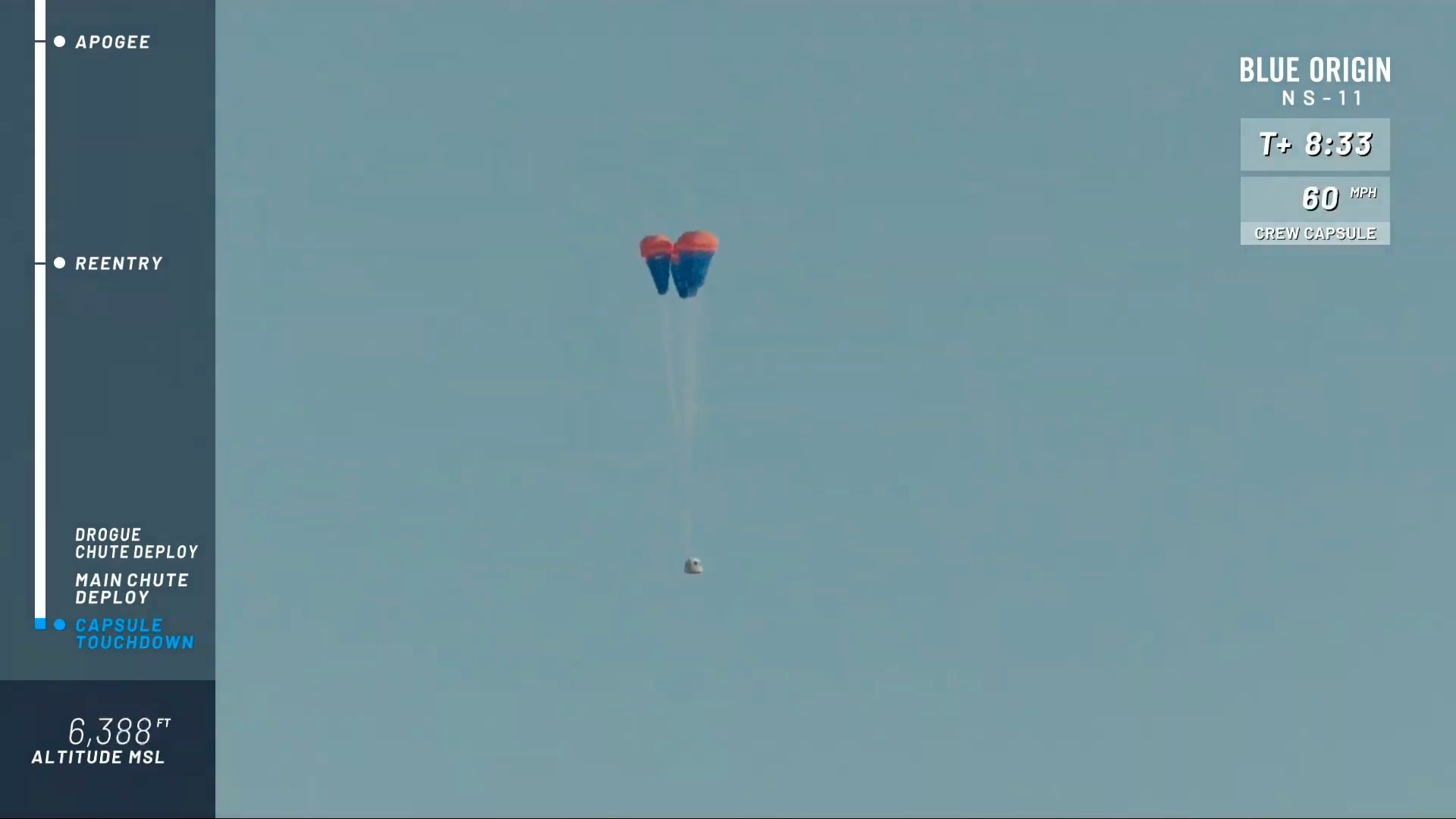
Main parachutes deploy from the New Shepard crew capsule. These three parachutes will slow the craft to make a smooth landing.
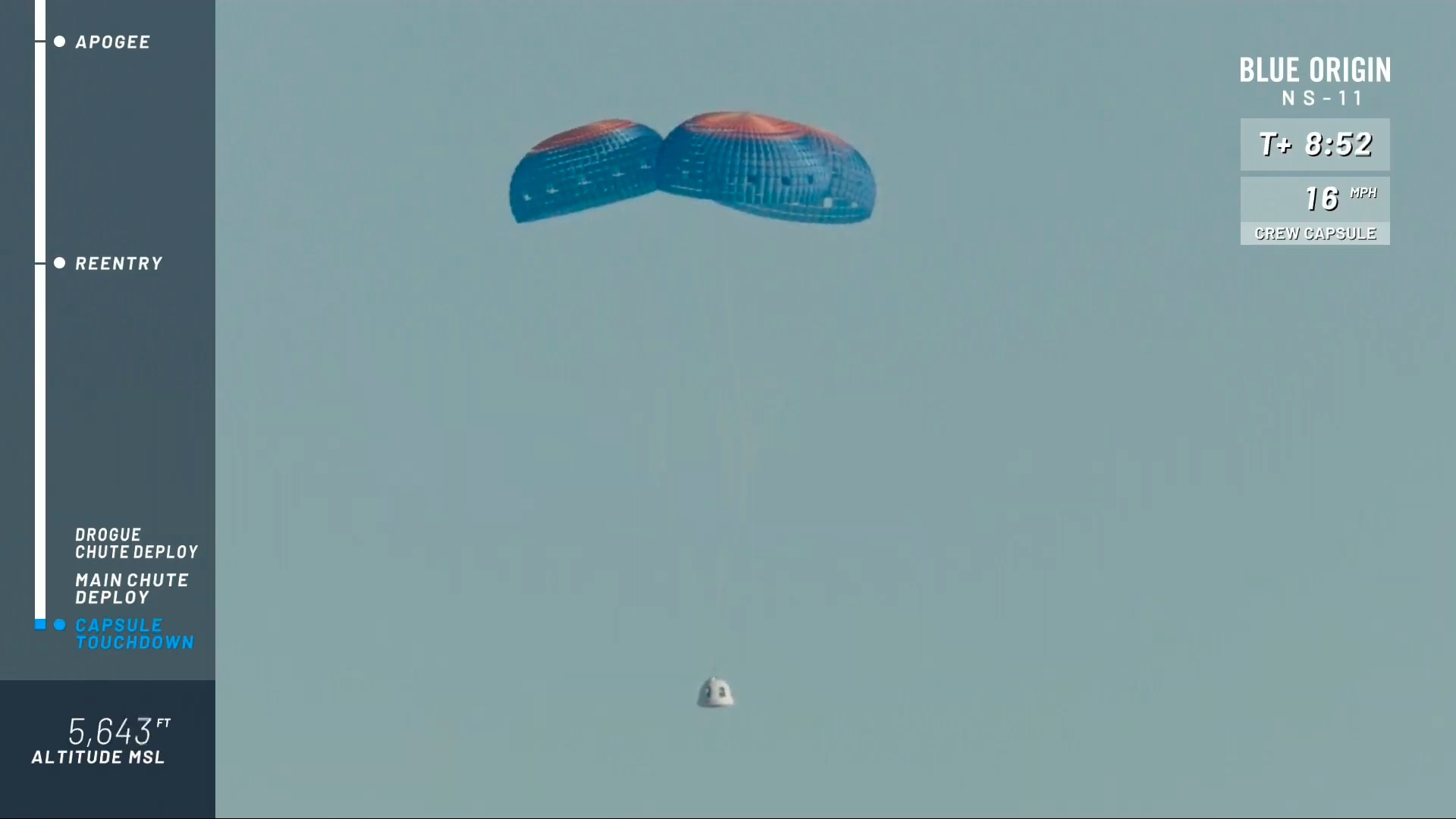
Here, the New Shepard capsule's parachutes are fully deployed as the capsule descends back to Earth.
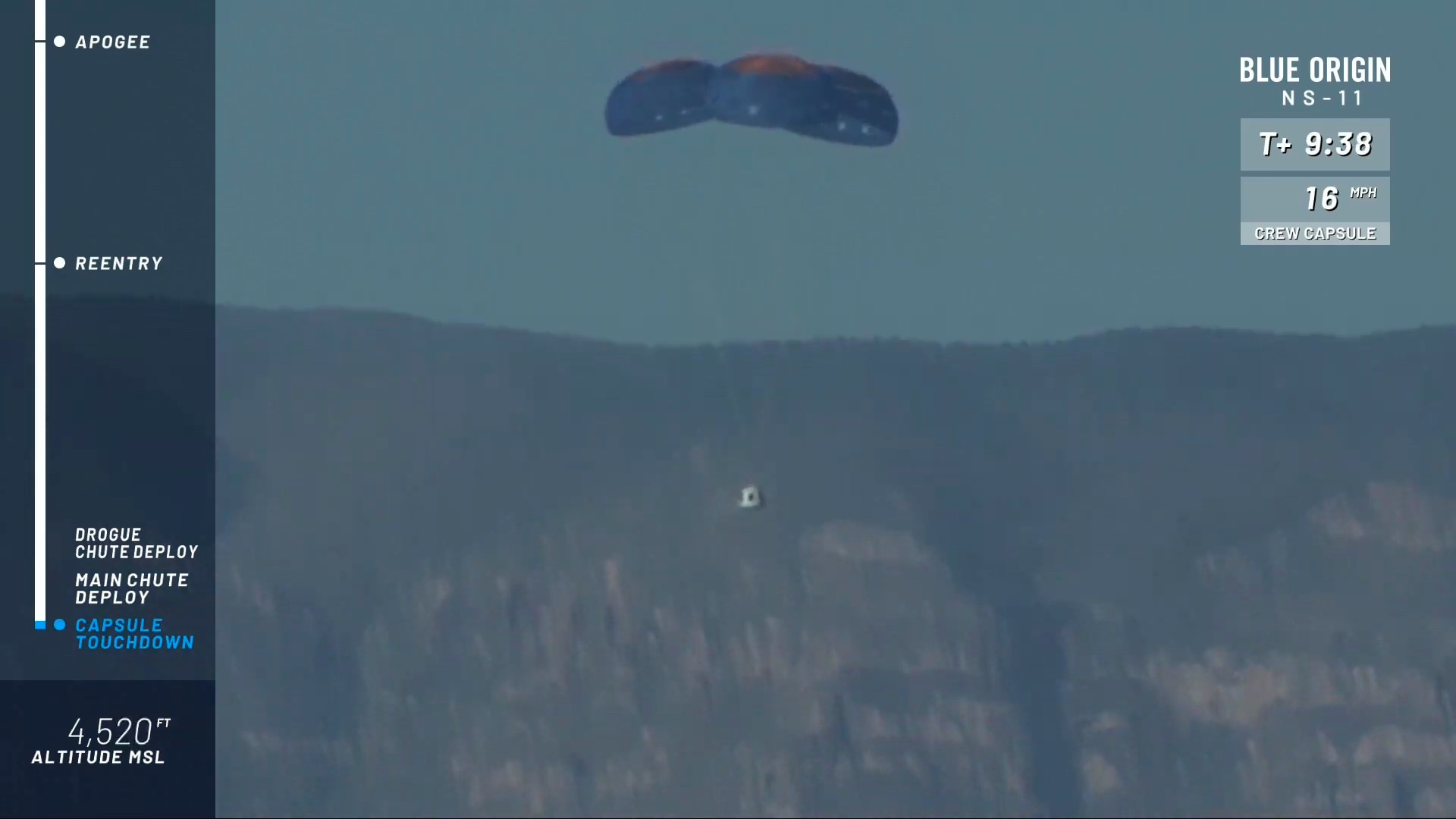
The descent continues.
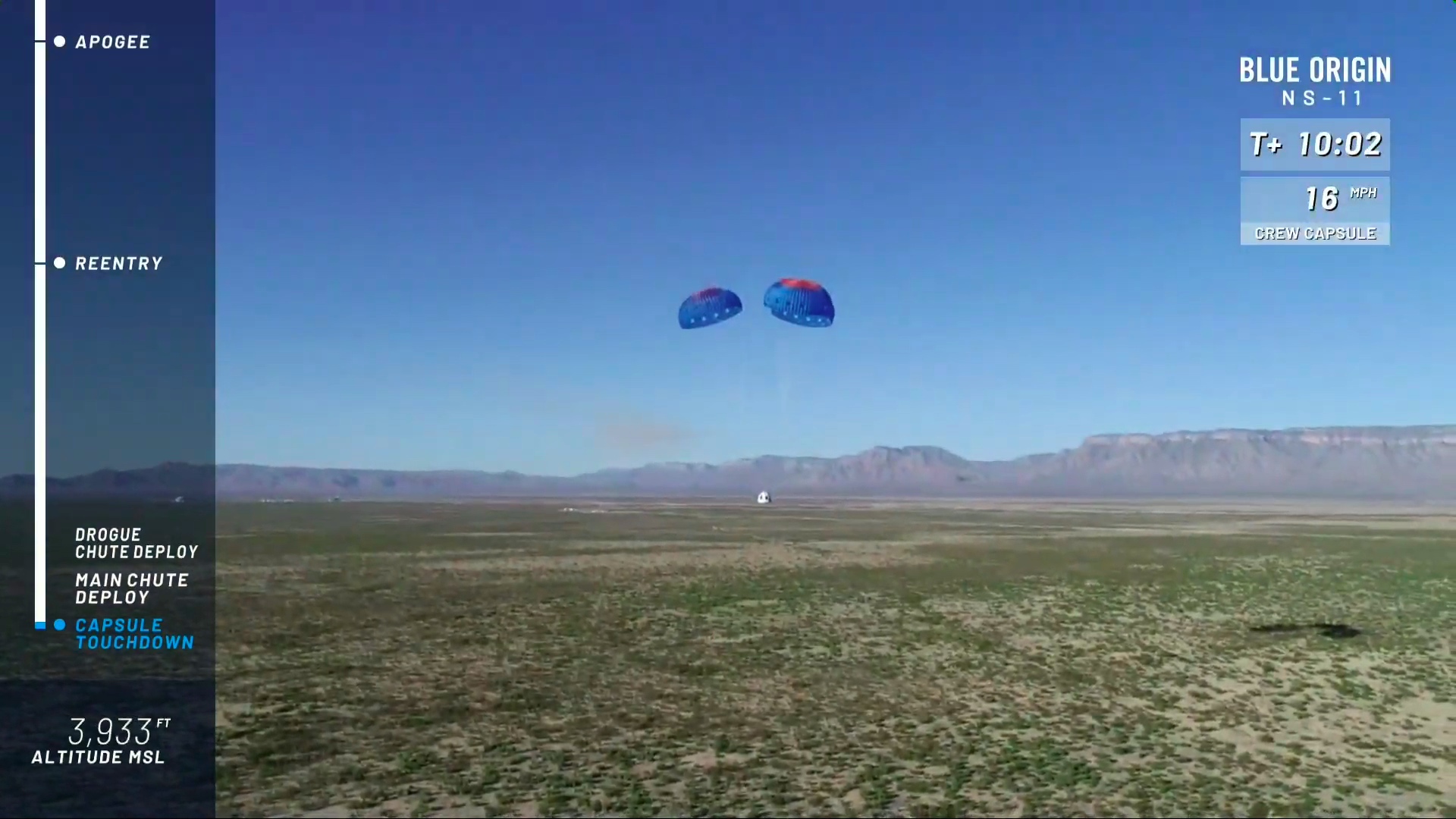
The New Shepard capsule nears touchdown a few miles downrange of its West Texas launch site.
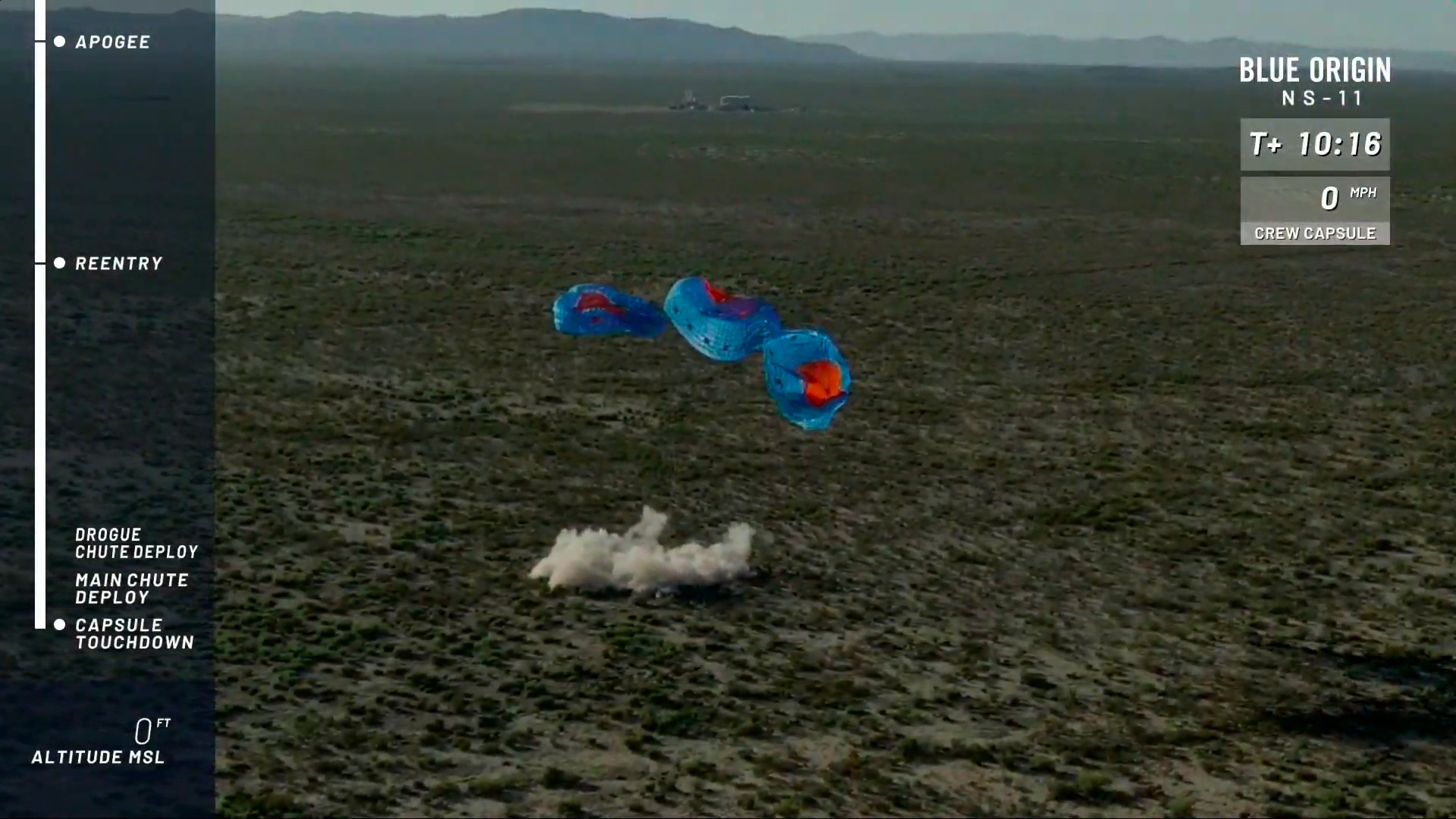
Touchdown! The New Shepard capsule lands safely back on Earth.
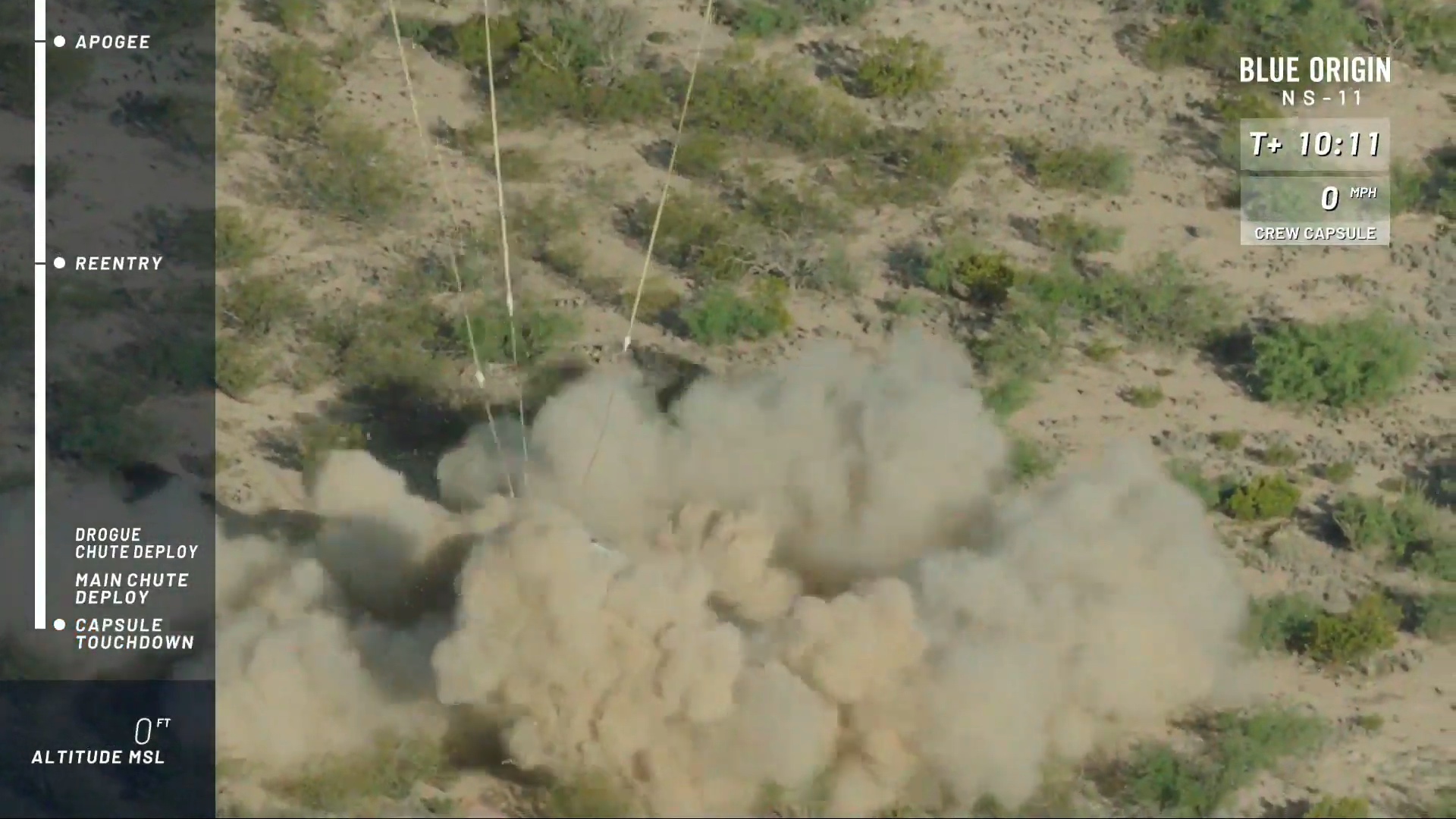
The New Shepard capsule kicked up a big dust plume as it landed on Earth.

Back on Earth. This Blue Origin image released after the NS-11 flight shows a view of the capsule at its landing site. The body in the window is Mannequin Skywalker, a dummy that Blue Origin has been flying aboard New Shepard flights to measure the effect on passengers. The sheer size of New Shepard's giant windows is also visible.

Hanneke Weitering is a multimedia journalist in the Pacific Northwest reporting on the future of aviation at FutureFlight.aero and Aviation International News and was previously the Editor for Spaceflight and Astronomy news here at Space.com. As an editor with over 10 years of experience in science journalism she has previously written for Scholastic Classroom Magazines, MedPage Today and The Joint Institute for Computational Sciences at Oak Ridge National Laboratory. After studying physics at the University of Tennessee in her hometown of Knoxville, she earned her graduate degree in Science, Health and Environmental Reporting (SHERP) from New York University. Hanneke joined the Space.com team in 2016 as a staff writer and producer, covering topics including spaceflight and astronomy. She currently lives in Seattle, home of the Space Needle, with her cat and two snakes. In her spare time, Hanneke enjoys exploring the Rocky Mountains, basking in nature and looking for dark skies to gaze at the cosmos.
